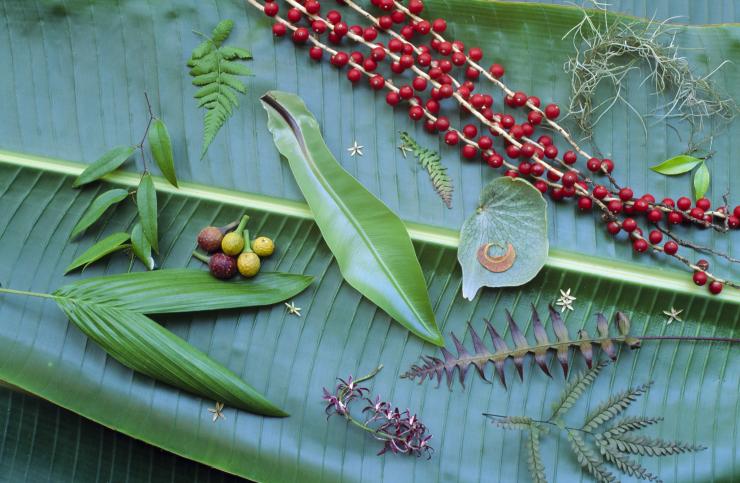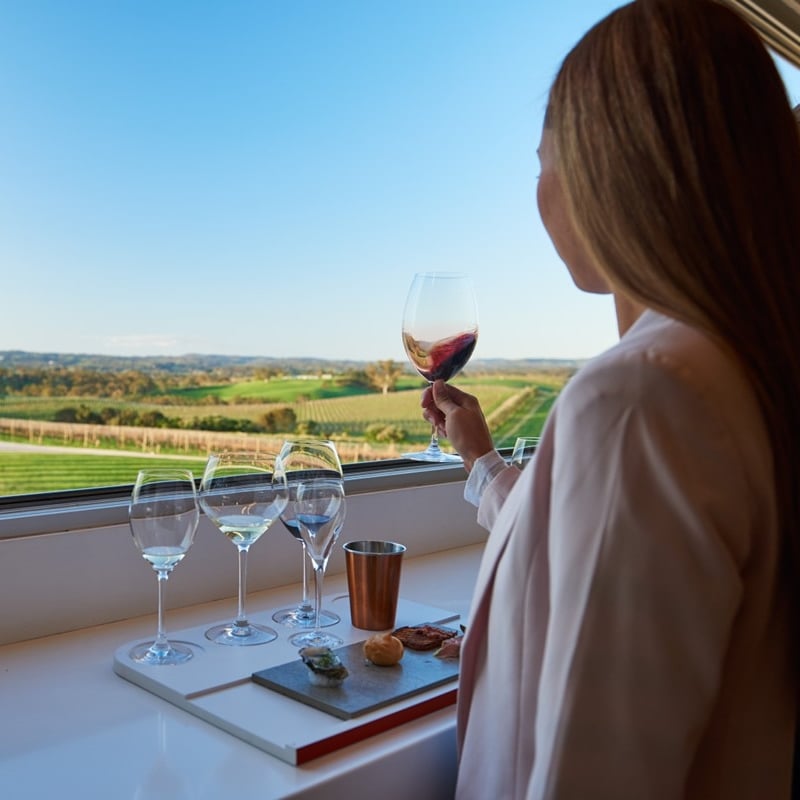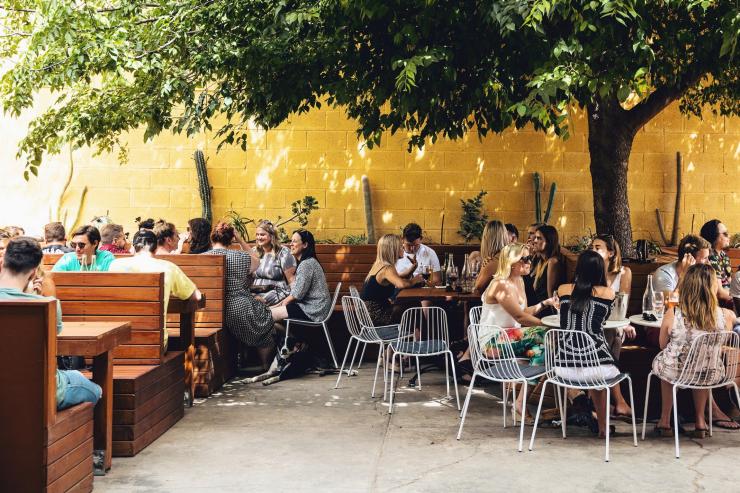
The Kettle Black, Melbourne, Victoria © Visit Victoria
A guide to Australian cuisine
Hungry to know more about Australian food? Try this easily digestible guide for starters.
By Natascha Mirosch
Blessed with a wide variety of climates, from the warm tropical north to the cooler southern regions, there’s little Australia can’t grow or produce. And thanks to our vast multicultural population, there’s barely a cuisine that’s not on the menu. Whatever your dining preference, we’ve got you covered.
What is Australian cuisine?
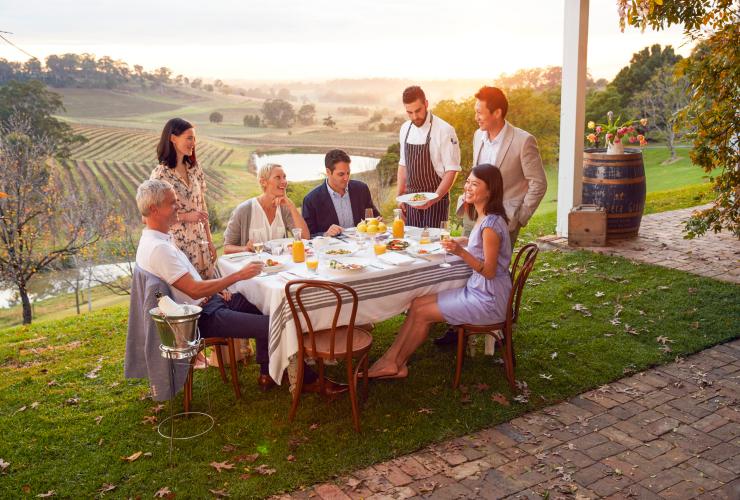
Bistro Molines, Hunter Valley, New South Wales © Tourism Australia
The definition of “Australian” cuisine has always been hotly debated, but there are some essential characteristics most of us can agree on.
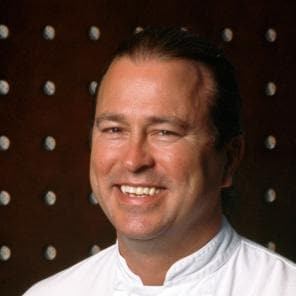
"It’s the quality and freshness of our ingredients, the amazing seafood and our multilateralism."
Unfettered by tradition, we don’t mind cherry-picking from other cuisines, expertly combining native bush foods, seafood and endemic proteins such as crocodile, kangaroo and emu, with the flavours of our Asian neighbours and the traditional foods of newer Australians. We’ve created a cuisine that speaks of our history, geography and diverse population.
As to how we eat – we like to punctuate the year and changing of the seasons with celebrations featuring food – a lamb roast on Easter, fresh prawns at Christmas, the first juicy mangos enjoyed as spring clicks over to summer. Australians also prefer to eat outdoors as much as possible; whether it’s breakfast at a sidewalk café, toasting sunset with a glass of sparkling wine and a plate of oysters on a rooftop terrace, or gathering with friends for a backyard barbecue.

Stokehouse, Queensland © Parker Blain
Spectacular seafood
The seas surrounding Australia provide a bounty of high-quality seafood, from briny cold-water oysters in southern waters to the sweet white flesh of wild barramundi caught in the north. If you’re keen to have a go at catching your own supper, you can join a fishing tour, from big game charters in Australia’s Top End to fly fishing in Tasmania. You can also learn how to cook it yourself at Sydney Seafood Market’s cooking school.
And while there are plenty of restaurants specialising in seafood, it’s not all posh-plated – there’s an inherent pleasure in enjoying a “bucket” of prawns in a surf club or unwrapping a warm paper package of fish and chips to share at a picnic table by the water.

Bush Tucker Journey, Yulara, Northern Territory © Voyages
Bush tucker and native ingredients
The taste of Australia is inherent in our traditional wild foods from the bush and rainforest – plants such as lemon myrtle, Kakadu plum, wattleseed and warrigal greens. Unlike anything else in the world, our bush tucker has been feted by visiting chefs, like Denmark’s Rene Redzepi and the UK’s Heston Blumenthal, and is being used in ever-more creative ways by chefs such as Ben Shewry of Melbourne’s Attica and Peter Gilmore of Sydney’s Bennelong. In shops and casual cafés, and even in supermarkets, you’ll find the distinctive flavours infused into everything from tea and soft drinks, to chocolate and ice-cream.

"Australia’s Indigenous people have lived off bush tucker for aeons, and today’s chefs are not only highlighting Indigenous ingredients because they offer a point of difference, but because they taste good."

Mayura Station, Canunda, South Australia © South Australian Tourism Commission
Beef, lamb and kangaroo
Australia has an enviable reputation as one of the top beef producers in the world. Our cattle have plenty of space to graze and are often “finished” on grain to ensure the most tender and tasty meat possible. Look out for speciality varieties, such as Black Angus: Australia’s own exceptional, fat-marbled wagyu.
As for lamb, many of the top producers are from the cooler south and it's at its best in spring.
Kangaroo, wild caught and sustainable, is a healthy, low-fat and surprisingly mild flavoured meat, widely available all year round. You can buy it from supermarkets as steaks to pan-fry at home, in cafés as gourmet burgers, or elegantly served in more upmarket restaurants.
How to eat like a local

Folk cafe, Byron Bay, New South Wales © Folk Cafe
Café culture and brunch
Ask an Australian how they spent their weekend, and there’s a good chance they spent at least some of it in a café – there’s nothing many of us like more than whiling away a few hours with friends or family over brunch. Cafés (many al fresco) proliferate, from city centres to the smallest towns, and are typically relaxed about the what and when. Fancy a house-made burger for breakfast at 8am? Sure thing. Delicious congee (Chinese rice porridge) with all the accompaniments at 10am? No worries. A stack of pancakes piled high with berries and chocolate sauce at 3pm? Can do.

Quay, Sydney, New South Wales © Nikki To/ Quay
Restaurant culture and dining
Australia has plenty of world-class restaurants and globally-trained chefs, but you’ll find fine dining in Australia is less formal than in many European or American equivalents. That’s because as diners, we prefer the “fine” to be showcased in the food, rather than in rows of cutlery, obsequious staff, “stars” (or “Hats” as we call them in Australia) and starched tablecloths.
Fine dining in Australia is not restricted to our cities either; some of the country’s most highly regarded restaurants are in tranquil settings in our regional areas, places where chefs take their cues from the seasons and base their menus around the abundance of locally grown and reared produce.
"Our aim is to constantly be inventive, drawing influences from season, flavour, aroma, wine and texture. We have a conceptual approach to cooking, which reflects on travels and exchanges of ideas."

Cherryhills Orchard, Yarra Valley, Victoria © Cherryhill Orchards
Farm to fork
Australia’s climate and size means we have fresh produce all year round and there’s little we have to import. You don’t have to travel far out of the city to see Australia’s farming landscape for yourself. Take a drive and look out for stalls on the roadside, where you can buy fresh produce, leaving money in an “honesty box".
“PYO” (“pick your own”) signs, meanwhile, signal the opportunity to gather your own produce straight from the earth or trees – from rosy, sun-warmed strawberries to macadamia nuts.

The Hungry Monkey, Kiama, New South Wales © Lauren Bath
Vegetarian and vegan
Australia has a tradition of eating meat going back some 60,000 years, but the nation’s population of plant-based foodies is rapidly increasing in line with the number of vegetarian and vegan dining options available. From ‘“heat-and-eat” meals available in supermarkets to health-focused cafés and specialised vegan or vegetarian restaurants, along with omnivore eateries who can accommodate vegans and vegetarians with some notice. Even pubs, famous for their meaty menus, now typically have at least one plant-based dish on the menu.
How to drink like a local

Industry Beans cafe, Fitzroy, Melbourne, Victoria © Josie Withers Photography
Coffee
Australia’s introduction to good coffee arrived with Italian immigrants in the post-World War II years and has flourished ever since. Melbourne is generally regarded as the epicentre of coffee culture, but whatever city you’re in, you’ll find coffee-obsessed locals milling around roasteries and speciality cafés waiting on their order. The most important thing to know is that Australians don’t just order a “coffee” but specify a “flat white” (coffee with steamed milk, but no froth), a “macchiato” (espresso with a shot of milk), or others. And we like mixing it up, experimenting with baristas’ offerings of single-origin beans, different roasts and a whole menu of experimental brews, from “pour-overs” to “cold drips".

Penfolds Magill Estate Kitchen, Adelaide Hills, South Australia © Penfolds
Did you know?
Australia is home to 65 wine regions with over 100 different grape varieties.

Australian wine
Australia has a winemaking culture dating back to the 1800s, and we like to think we’ve gotten pretty good at it. There are wine regions in every Australian state except the Northern Territory, all offering an expression of their own terroir.
Some of Australia’s most famous winemaking regions include The Hunter Valley in New South Wales; South Australia’s Clare Valley, The Barossa and Coonawarra; Victoria’s Yarra Valley; Margaret River in Western Australia and Tasmania’s Tamar Valley.
Climatic and geographical differences mean we can grow just about everything from traditional grapes such as shiraz and cabernet to more experimental grapes. Natural “orange” and “minimal-intervention” wines are gaining popularity among winemakers, too.
Serious wine lovers shouldn’t miss the opportunity to try iconic wines such as Penfolds’ Grange, Henschke’s Hill of Grace, and Cullen’s Vanya, either at the wineries’ own cellar doors or at acclaimed restaurants with top shelf lists, like Sydney’s Rockpool or Aria.
Read next
Australia’s coolest urban wineries and farms

Archie Rose Distillery, Sydney, New South Wales © Archie Rose
Beer and spirits
Australia’s craft beer scene has boomed in the past decade, with breweries and brew bars fermenting and serving everything from pale ales to porters. If spirits are your drink of choice, take a tour and taste of one of the country’s many distilleries, where gin, (often infused with Australian botanicals), rum and whisky are made. You can even have a go at blending your own gin or rum. If you prefer non-alcoholic refreshments, there’s a burgeoning scene in drinks that taste like the real thing without the effects – like the refreshing non-alcoholic wine by Maggie Beer or Aboriginal-owned company Sobah’s “beer".

























































































































